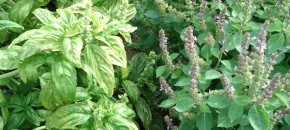Below is a list of where to get supplies for IPM programming. I have put together the following list for those of you who wish to purchase supplies. This is not an endorsement of any particular company. Some vendors are manufacturers, and sell direct, while others are only retailers. Distributors, Dealers, Manufacturers Phero Tech, Inc., […]
Continue reading...Wet Weather, Yellow Corn, N Losses
Many corn fields have been repeatedly saturated by recent successive rainfalls. Numerous fields, particularly no-till fields, are yellowing. While this could be due to several factors, one may be the lack or loss of Nitrogen. On sandy soils, N has probably leached below the root zone and on heavier textured soils some may have also […]
Continue reading...Tomato Disease Forecasting Report 6-14-13
6-14-13 Tomato Report – Click to Download Disease severity values (DSVs) for early blight, septoria leaf spot, and tomato anthracnose development are determined daily based on leaf wetness (due to rainfall, dew) and air temperature. On a daily basis DSV values can range from 0 to 4 where 0 = no chance for disease development […]
Continue reading...Potato Disease Forecasting Report 6-14-13
Potato Disease Forecasting Report 6-14-13 – Click to Download We will be tracking DSVs for Late blight development and calculating P-days for initiating the first early blight fungicide application. The first late blight fungicide application is recommended once 18 DSVs accumulate from green row. Green row typically occurs around the first week in May in southern […]
Continue reading...Vegetable Briefs 6-14-13

Basil downy mildew has been reported near Vineland! Bacterial leaf spot has been reported on tomato. Phytophthora blight has been reported on summer squash. No late blight has been reported in the region to date. The Late blight found in greenhouse tomatoes in WV two weeks has been reported to be US23. To track late […]
Continue reading...